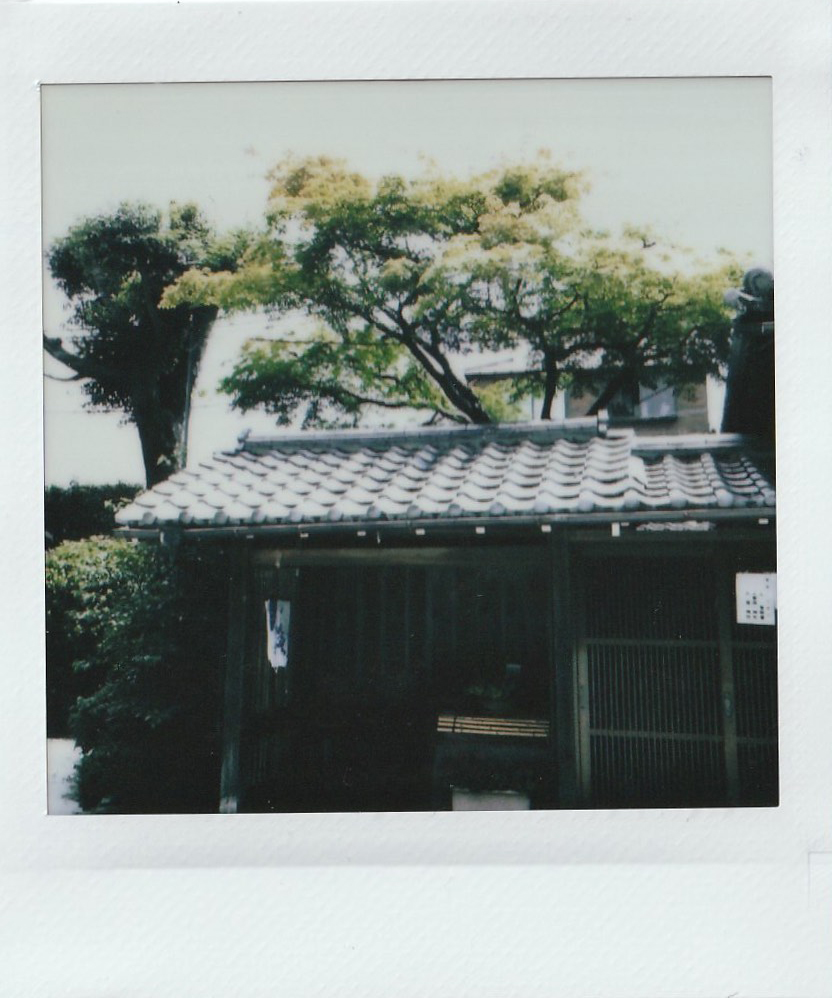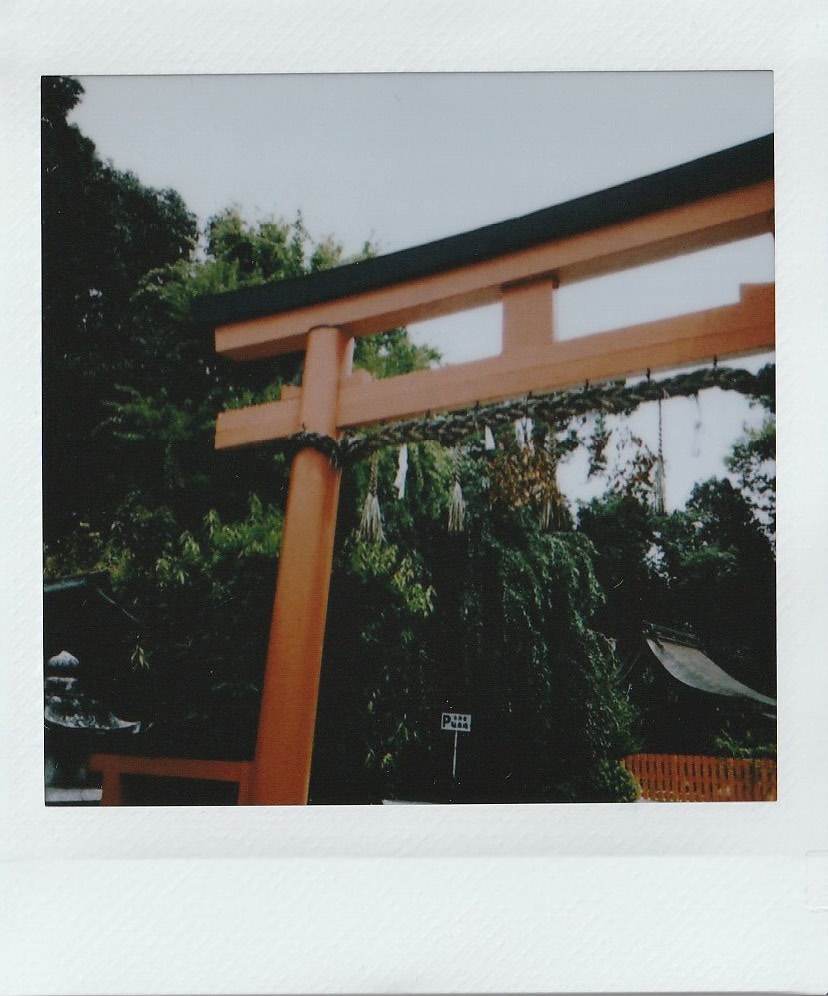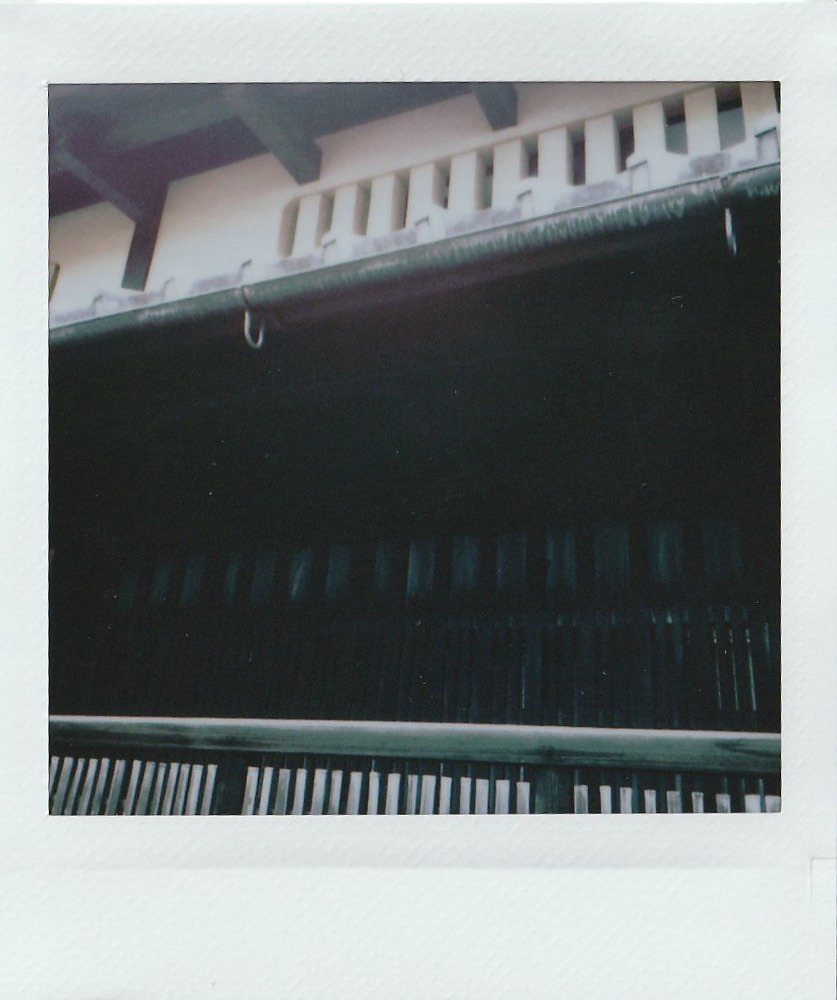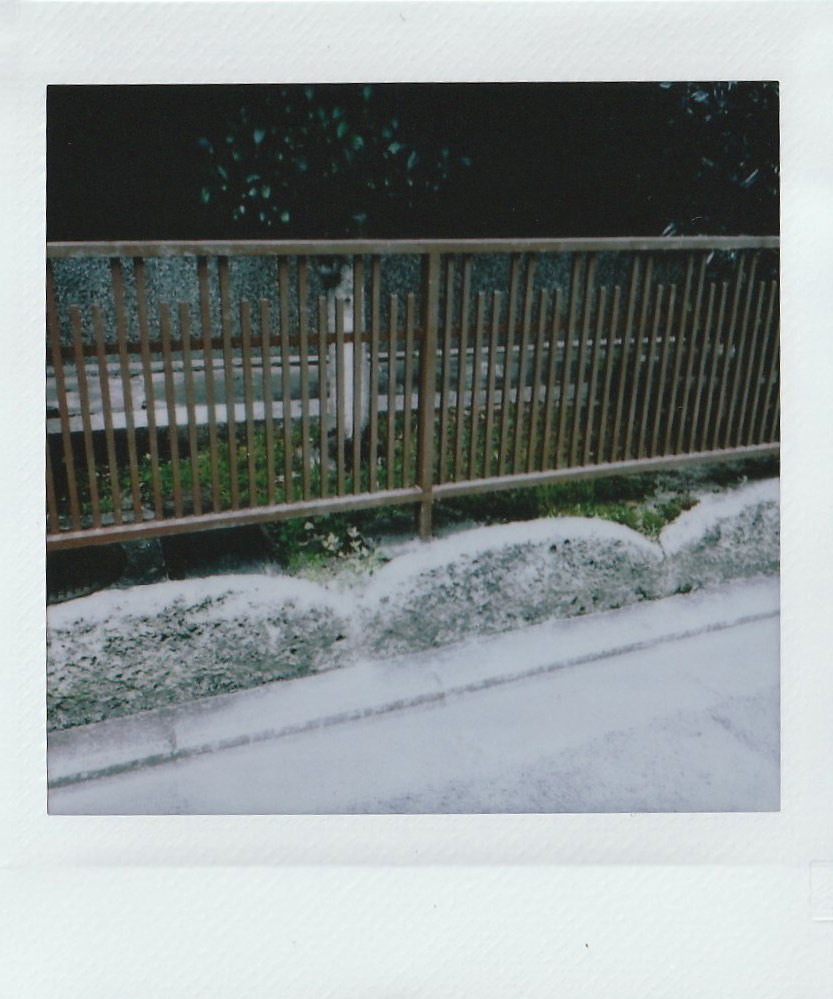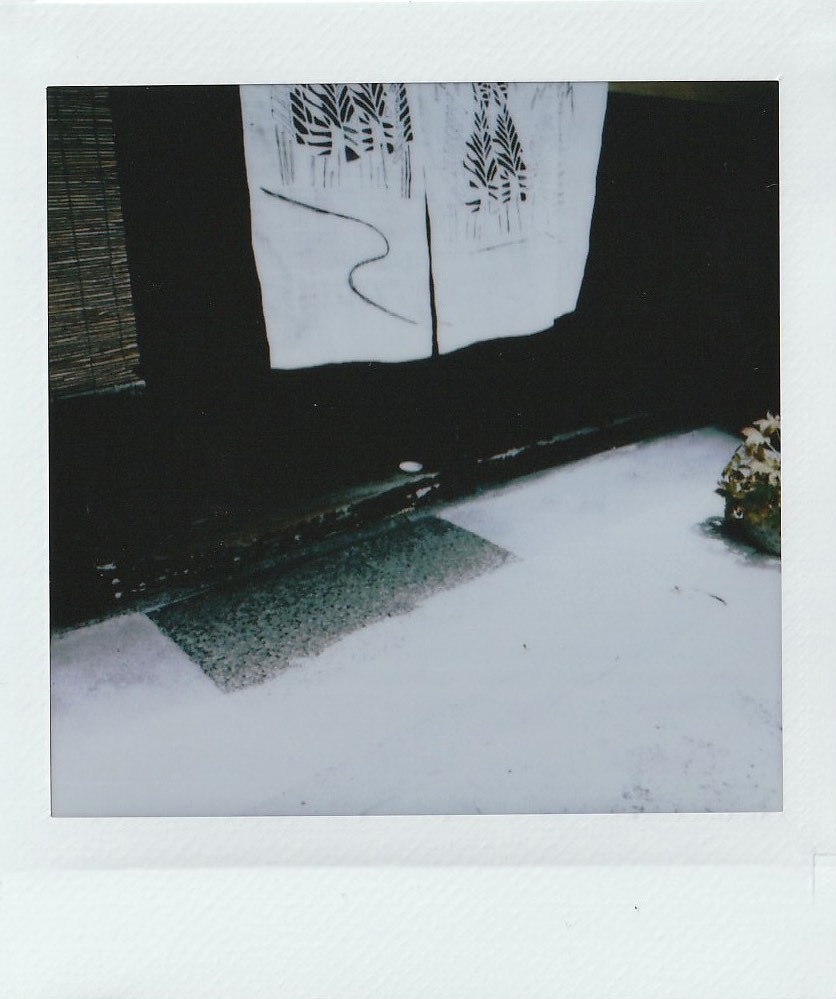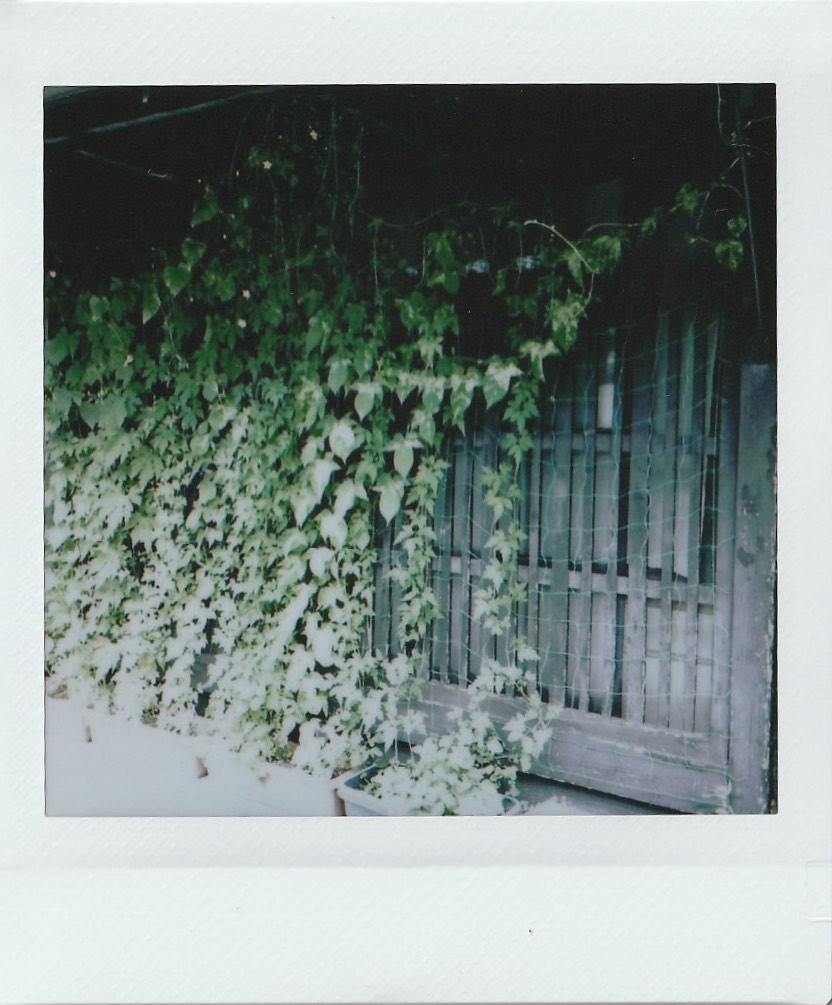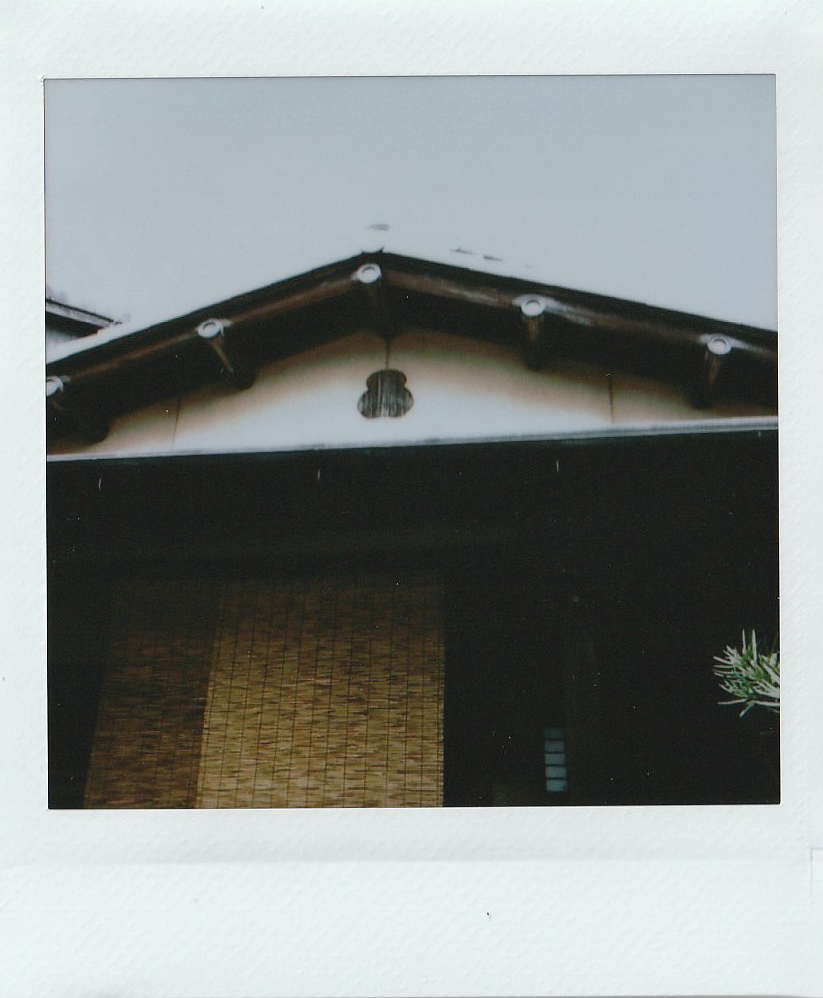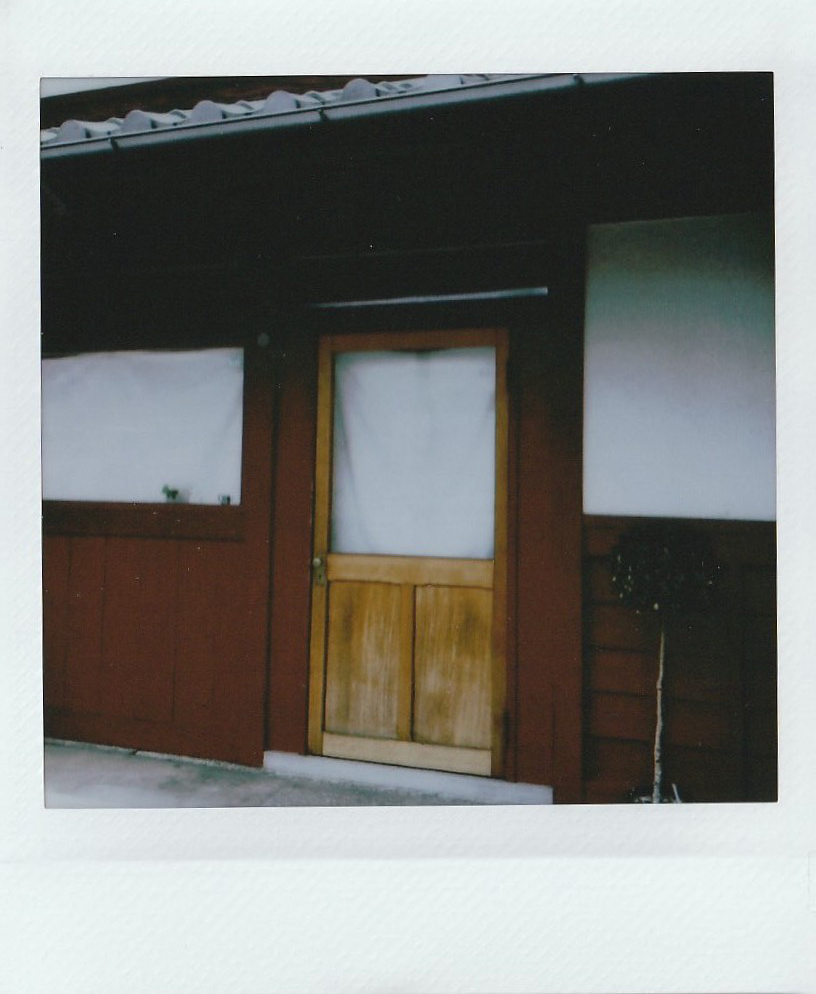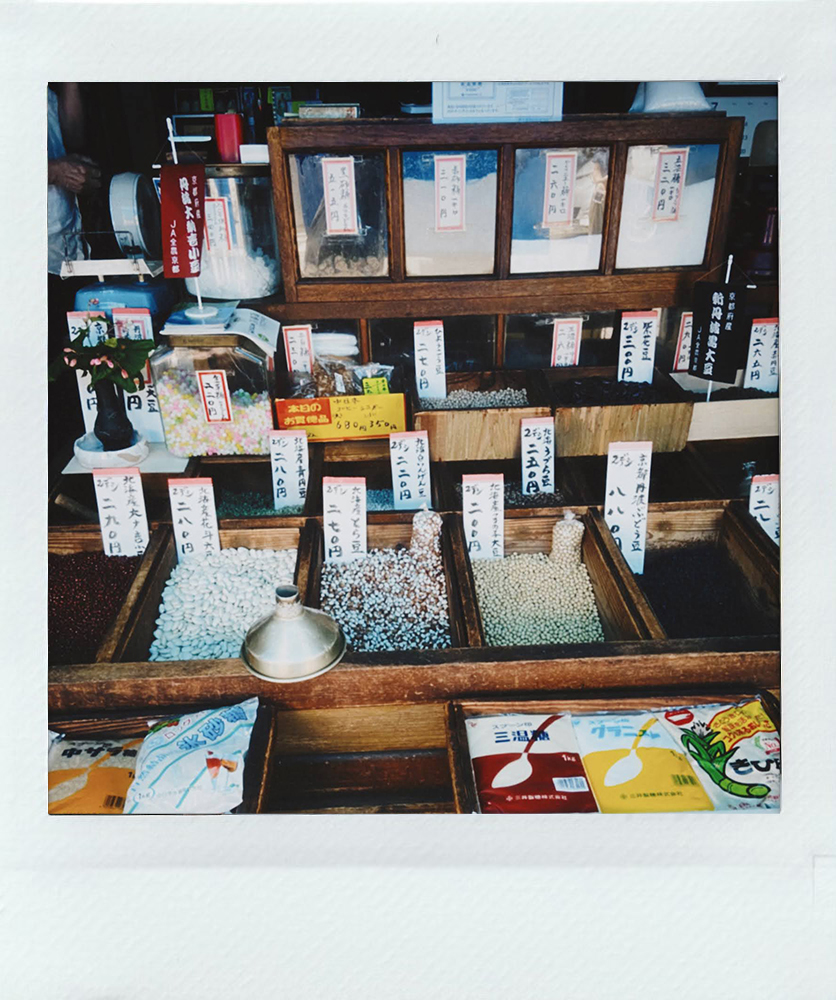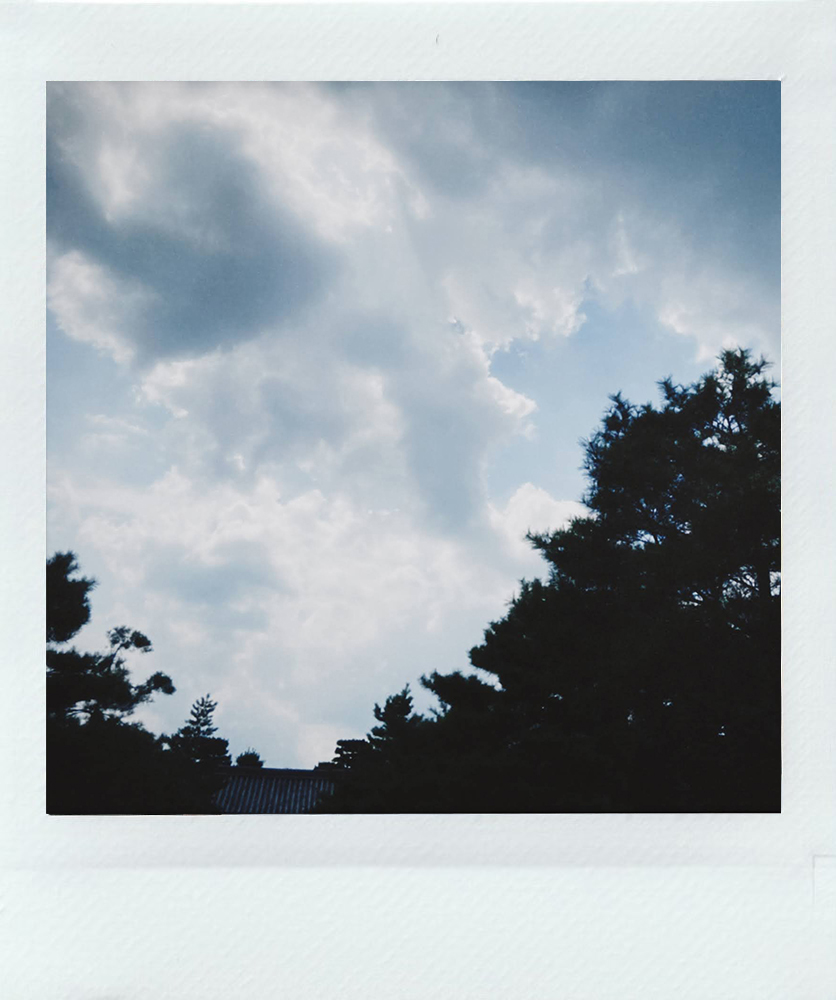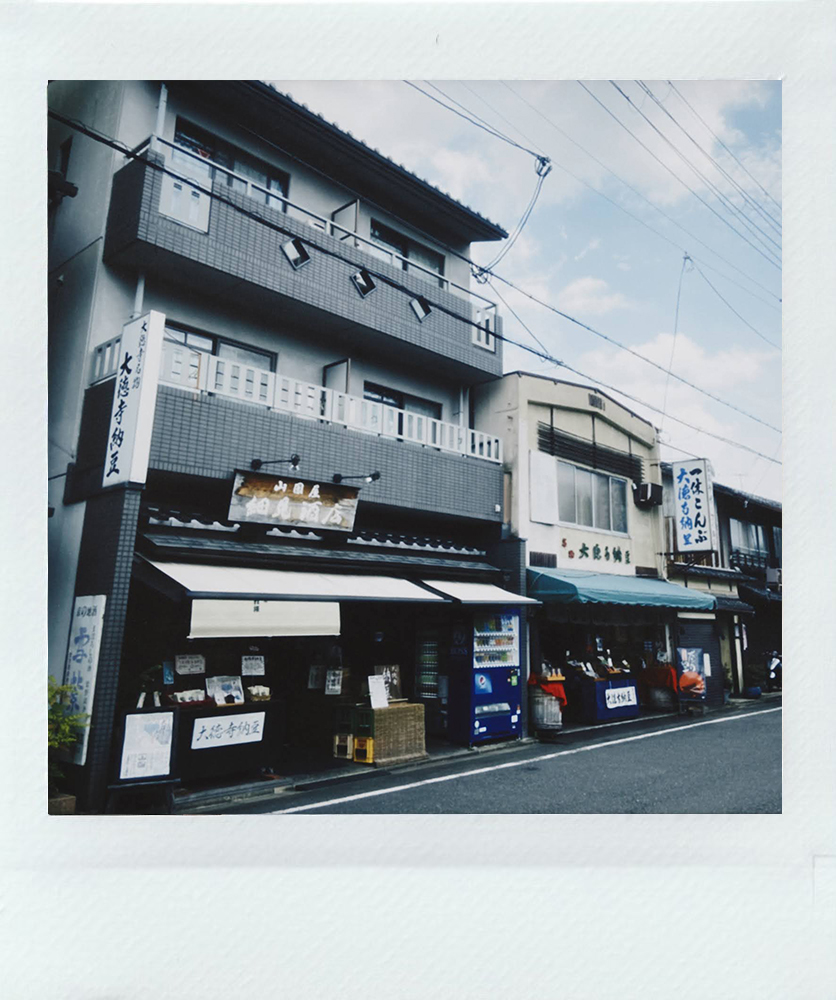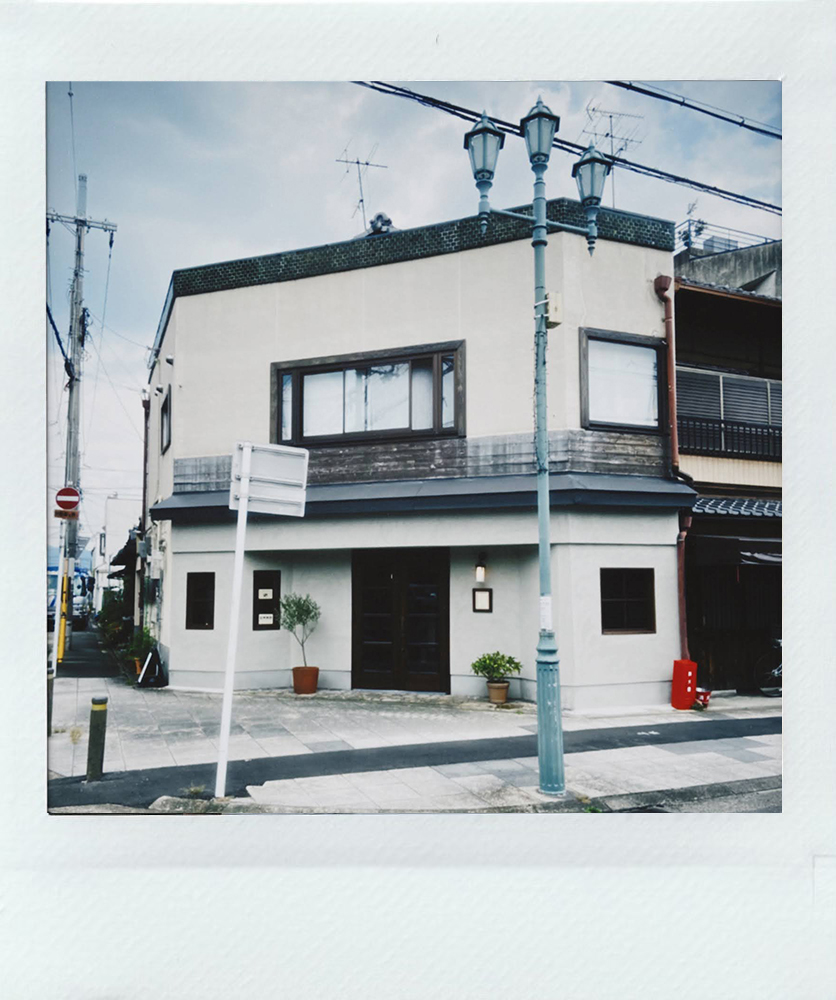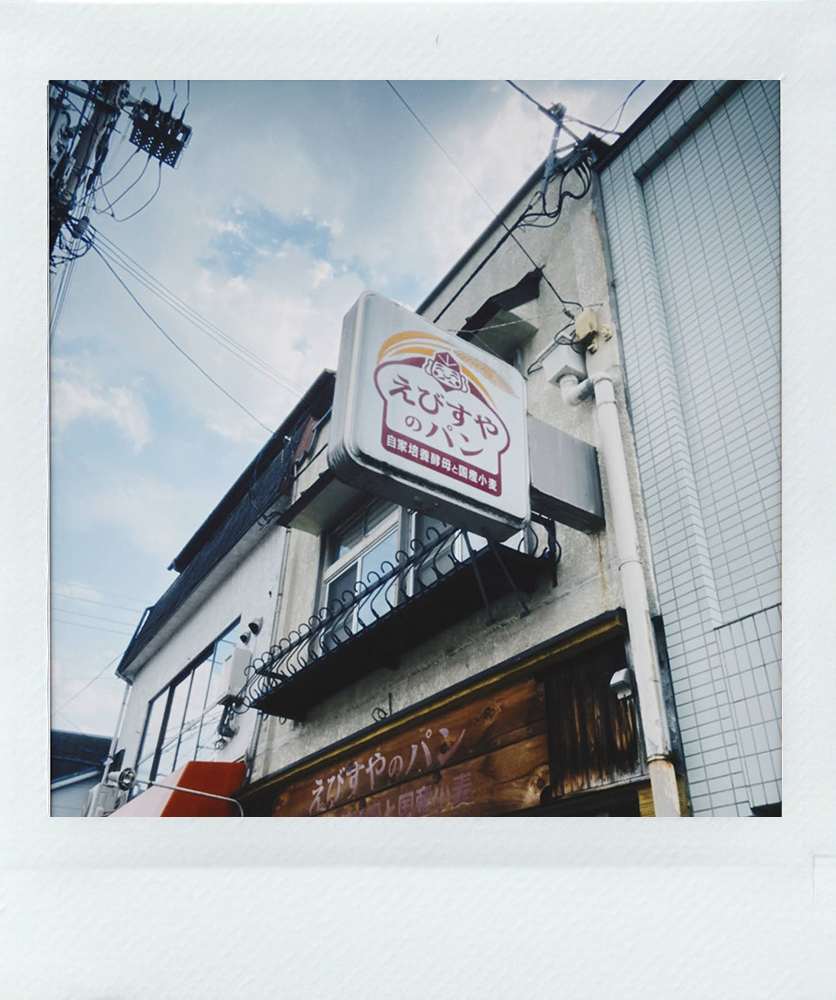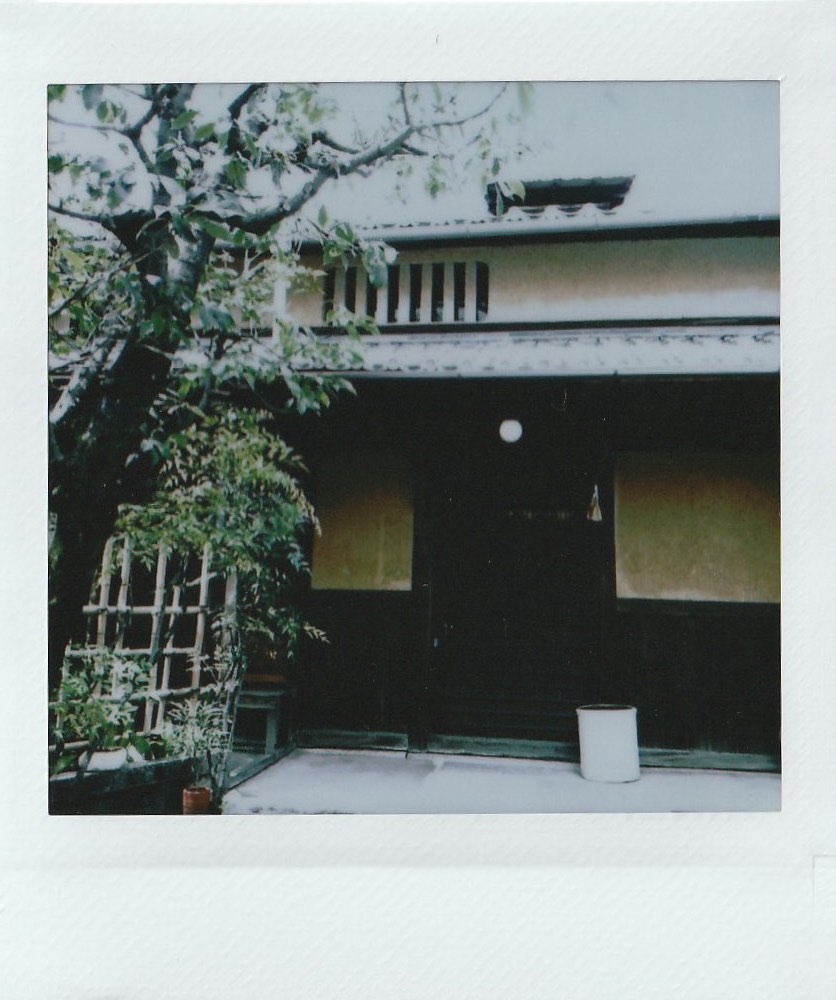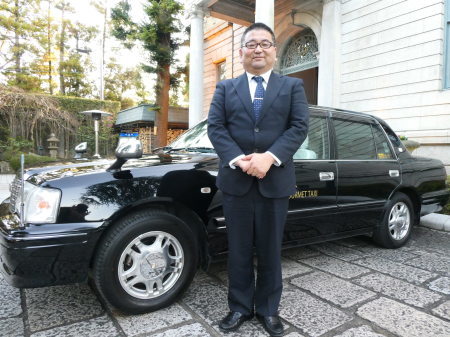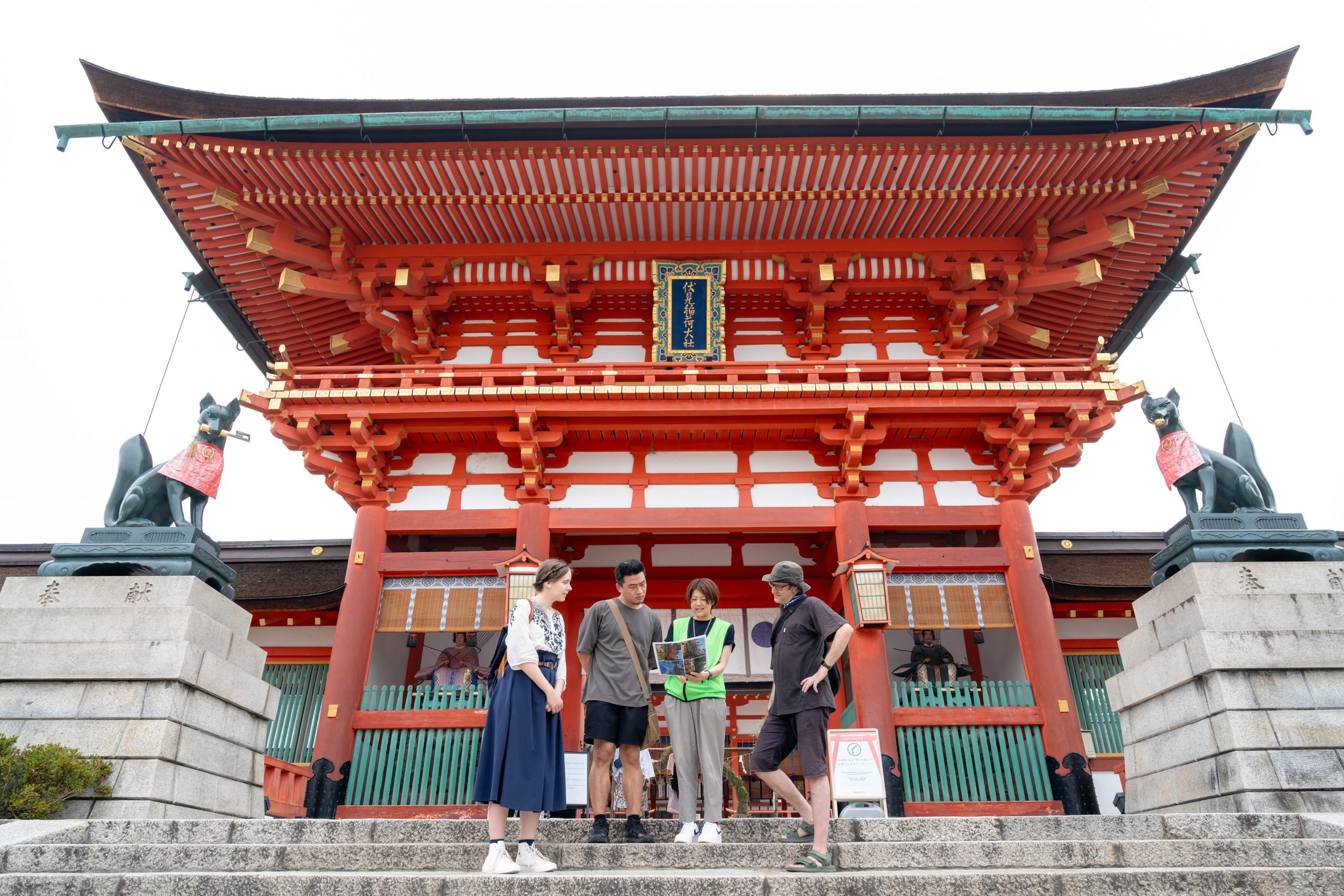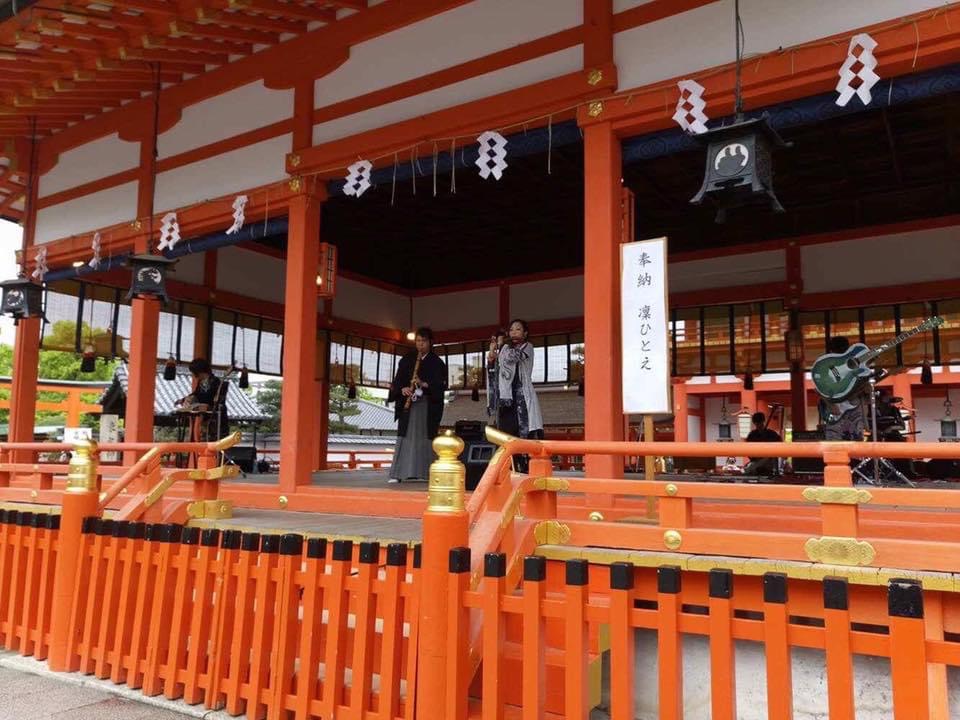
Nestled to the northwest of downtown Kyoto and west of the Kamogawa River along Kitayama Street, this area has developed as an old residential area and is known to locals as “Shichiku.” This time, we’ll be introducing Daitokuji Street and Omiya Street, two streets that run vertically through the Shichiku area. This hidden gem of an area, a stone’s throw away from the bustling city center and tourist spots, where a quaint old shopping street coexists alongside new yet aesthetically unpretentious shops, is starting to get noticed. Showing us around this time is Ryoko Mizokami, local resident and co-owner of the furniture and general store Kijirushi.
Our tour guide: Ryoko Mizokami
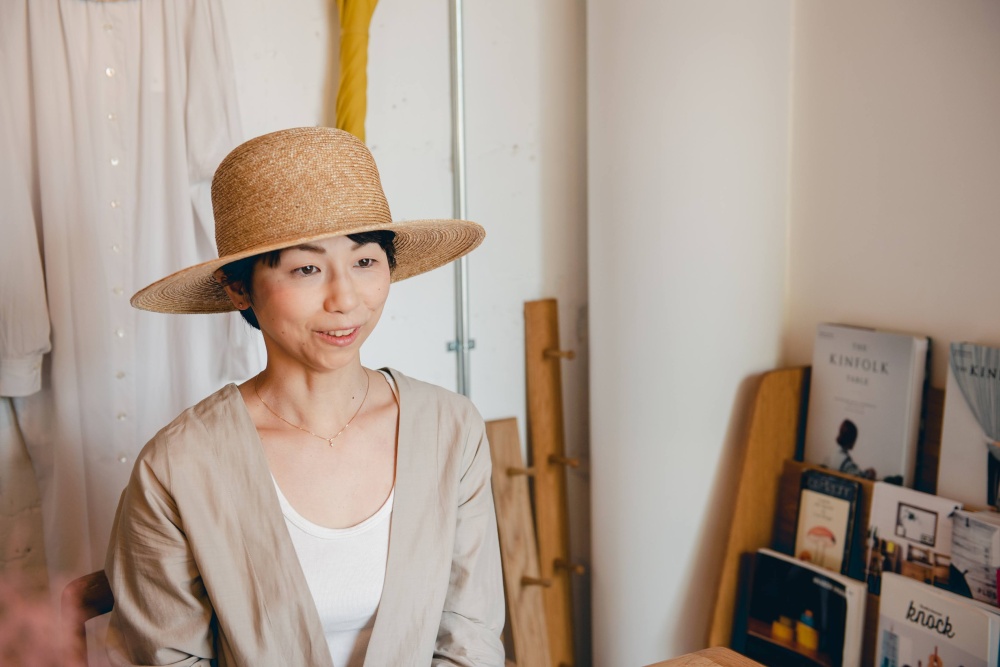
The name of the store, Kijirushi, is also the brand name of the furniture that Ryoko’s artisan husband, Yoshiro, designs and crafts. Initially, the couple opened their home in neighboring Kamigamo as a showroom by appointment so customers could see Kijirushi furniture in actual use. However, wanting a place that would allow more people to drop by, they set up this store in 2015. “Furniture alone is plain and doesn’t give a sense of lifestyle, so we started stocking general items as well to show the pieces in a more everyday setting,” Ryoko tells me. The functional yet beautiful Shaker-esque furniture plus the fine items and clothing to complement the pieces draw all sorts of visitors to the shop from both Japan and overseas.
Ryoko used to work in a variety store in Kyoto, so she selects the items for the store and promotes the Kijirushi furniture together with Yoshiro. I wonder how Ryoko, who says she is a fan of simple, timeless pieces that last, perceives the Shichiku area with its streets largely unchanged since the days of old?
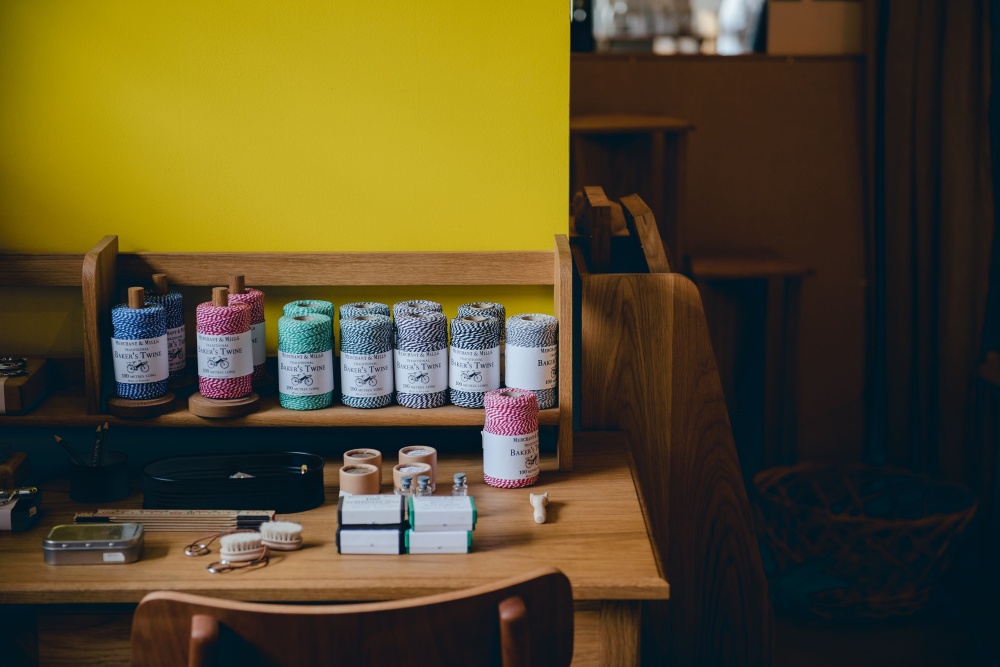
Inside Kijirushi with its display of furniture and items hand-picked by Ryoko
Characteristics of the Shichiku area
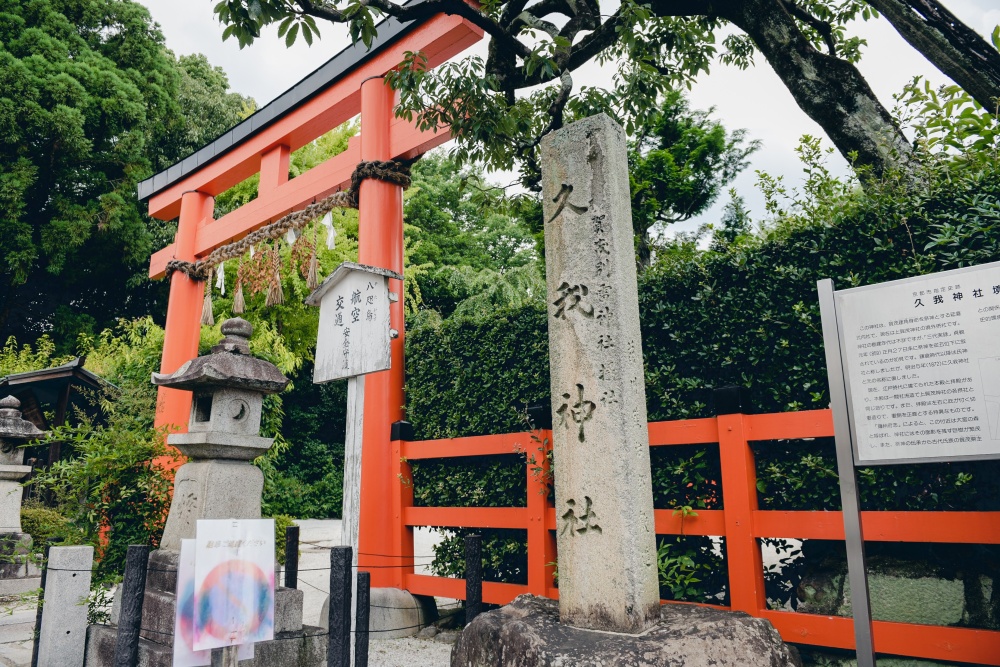
Kuga-jinja Shrine

Shin-Omiya Shopping Street

Daitoku-ji Temple
“Kuga-jinja Shrine opposite our shop was called Omiya a long time ago. Apparently, the shrine grounds used to be much bigger and this whole area all the way to Omiya Traffic Park was a forest called Omiya Forest. That’s why there are huge trees at the shrine and the park even now,” Ryoko says, her story stirring the imagination. The Shichiku area flourished with Kuga-jinja Shrine at its center. The traditional shopping street still does a lively trade and the scattering of stylish new shops bring a relaxed yet modern air, giving this pocket of Kyoto a unique feel.
At the northern end of this area are the remains of the stone Odoi wall, constructed in 1591 by Toyotomi Hideyoshi, the man of power at the time, to protect the city from enemy attacks as well as flooding of the Kamogawa River. And at the southern end is Daitoku-ji Temple, one of Japan’s biggest Zen temples. The temple is strongly associated with Zen monk Ikkyu Sojun and the great tea master Sen no Rikyu, two famous characters in Japanese folklore. This area continues to evolve while preserving traces of history. I was filled with anticipation as we set off, wondering what Ryoko, who calls this place home, would tell me.
A mix of continuity and renewal has enriched the neighborhood
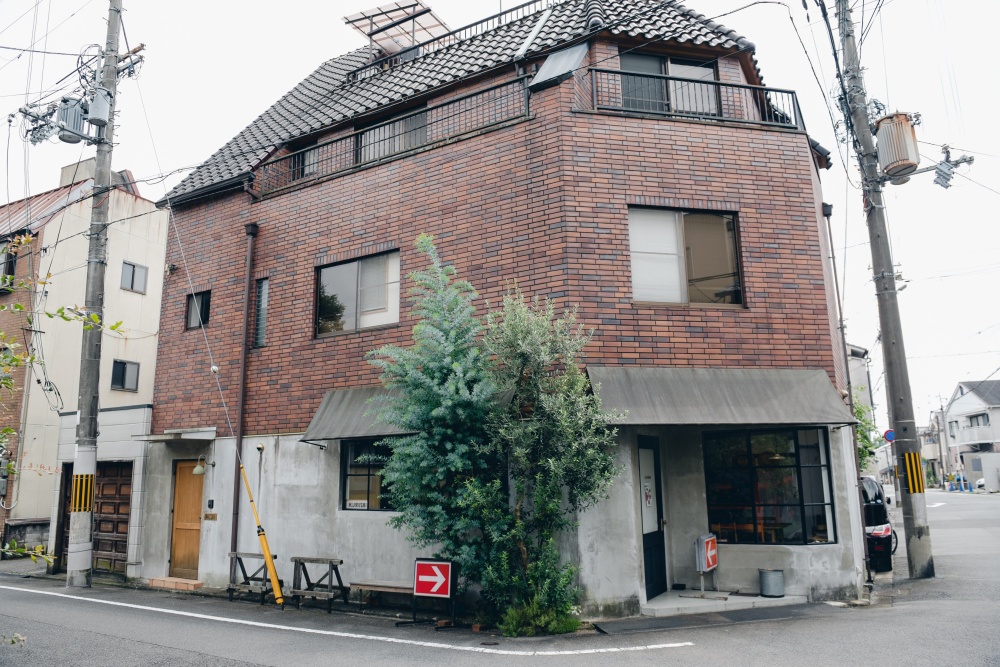
The exterior of Kijirushi. To the right is Daitokuji Street and to the left is Omiya Street.

Ryoko taking a photo at Kuga-jinja Shrine opposite her shop
We leave the shop, but before heading south, we stop by Kuga-jinja Shrine directly opposite. Looking at the dragon adorning the fountain for cleansing our hands, Ryoko tells me, “This shrine is closely connected with Kamigamo-jinja Shrine where that dragon is said to live. Futaba Aoi (Japanese wild ginger) is a symbol of Kamigamo-jinja Shrine, and can also be seen growing here and there.” Ryoko told me she doesn’t know much about history,, but listening to her, I could sense her respect for the stories behind the places in her neighborhood.
We leave Kuga-jinja Shrine and go left, heading south along Daitokuji Street. Ryoko snaps away with her camera as we walk along the residential street with its many traditional townhouses. “I’m drawn to the latticework on the windows of the old townhouses and the moss on the stone walls, all the things that give a sense of time having passed.” Her words are also reflected in Kijirushi’s motto of “future vintage.” Musing over what she thinks of items that can still be used way beyond ten or twenty years, “We pursue the ultimate in simplicity,” she says. While this is the couple’s approach when crafting furniture and selecting products for the shop, it also seems to be important when Ryoko chooses items to use in her everyday life.
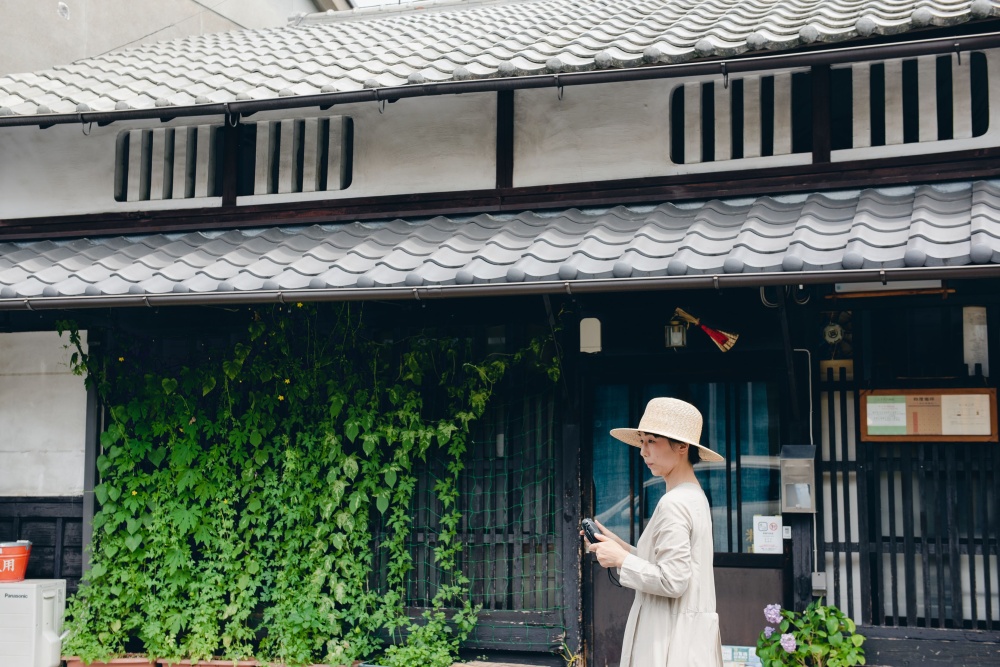
The residential area is studded with shops operating out of traditional townhouses
After walking for about ten minutes, we see the stone wall surrounding the grounds of Daitoku-ji Temple. “I’ve noticed that the leaves that fall on the road in front of a temple or shrine are swept up by the people living nearby,” Ryoko tells me as we look up at all the big trees growing over the top of the stone wall. “Sure events and festivals are popular, but this shows that people quietly take good care of temples and shrines regularly.” Hearing this, I noticed that the respect that every resident has towards old things that remain after many years has been fostered in this street where both old and new exist in splendid harmony. At the same time, there is also the view that the street of today will also be passed on to the next generation. That’s why the sensibility of the times and the successors is accepted, and renewal cherished. I can feel that this idea of continuity and renewal is enriching this neighborhood. Kijirushi, too, with its motto of “future vintage” has arrived at the idea of simple furniture that suits any environment because of this mindset. But it is not just about simply handing over to the next generation, it is the assumption that successors will modernize how it is used in line with the times and their personalities, and leaving them room to do so. Maybe that is simplicity.
“Have you heard of Daitokuji Natto?” Ryoko asks me as the entrance to Daitoku-ji Temple comes into view. “The soybeans are fermented and dried so they are salty and slightly sour. They are very nutritious, so the Buddhist priests of Daitoku-ji Temple used them as medicine and supplements,” she explains. She says that she looked up the nutrients when she found out about Daitokuji Natto. Her interest and inquisitive nature towards traditions that have been passed down since old times shows in every conversation.
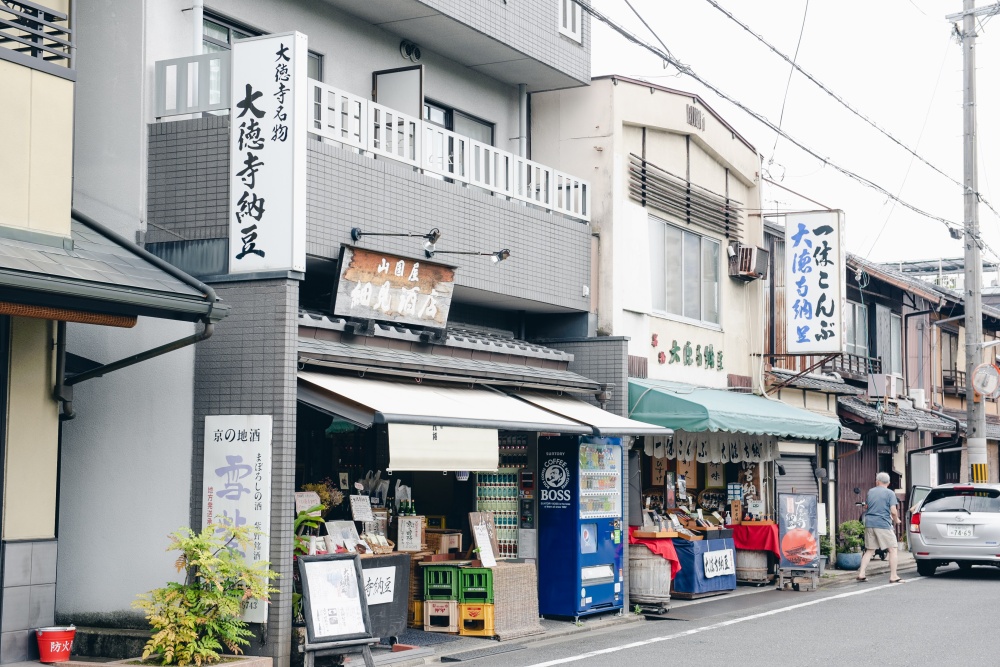
Daitokuji Natto is sold in souvenir shops near Daitoku-ji Temple
Shopping in shops where quality is guaranteed
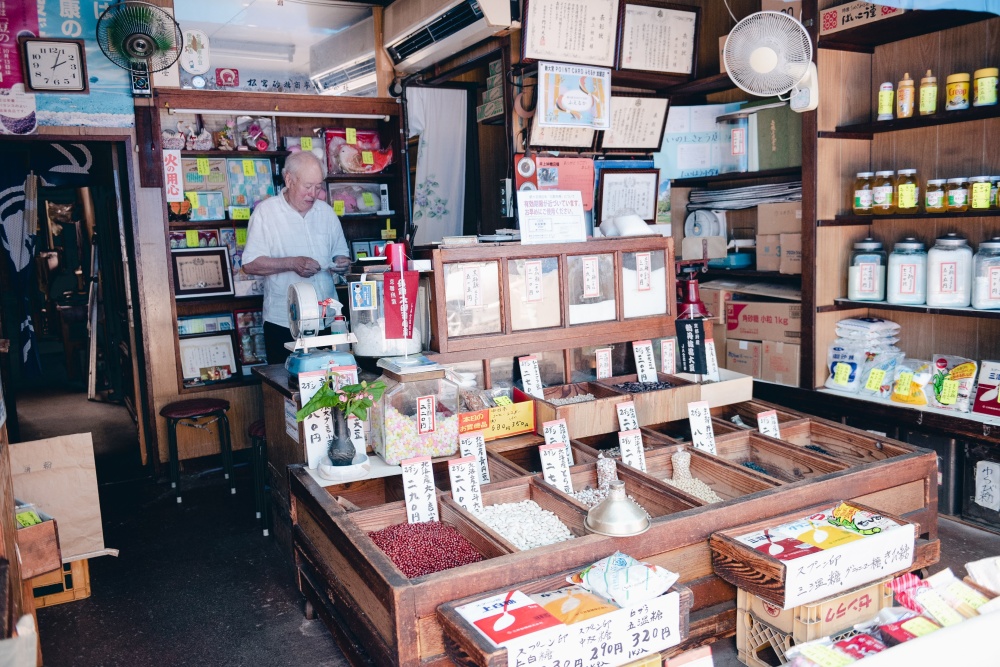
A sugar and bean shop in the shopping street. This long-standing mom-and-pop shop still thrives today.
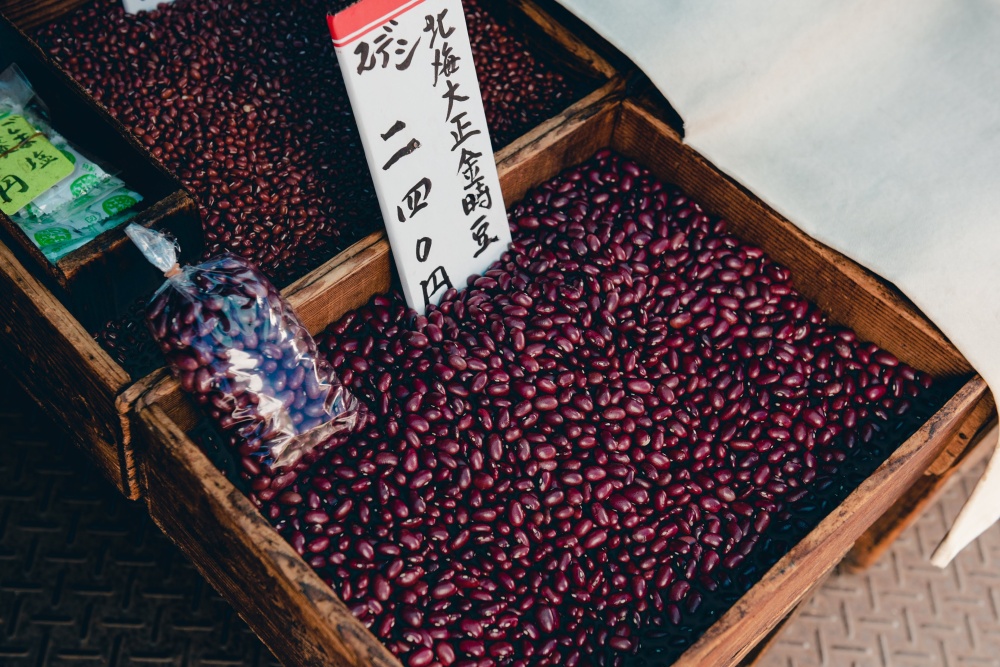
Red kidney beans sold by weight
We head east at Daitoku-ji Temple and then continue north along Omiya Street, which runs parallel to Daitokuji Street. In stark contrast to the quiet residential neighborhood of Daitokuji Street, Omiya Street is lined with many shops and has become Shin-Omiya Shopping Street. Greengrocers, fruit shops, butchers and other old-fashioned family-run shops are clustered here.
“I do almost all my shopping at local shops instead of the supermarket. Take fruit for example. It doesn’t always taste good at the supermarket, but there is a fruit shop in the shopping street where I know the fruit will always be top quality. I also like being able to buy locally-sourced produce,” Ryoko says. I can tell that she is just as particular about her food as she is about the items she uses in her daily life.
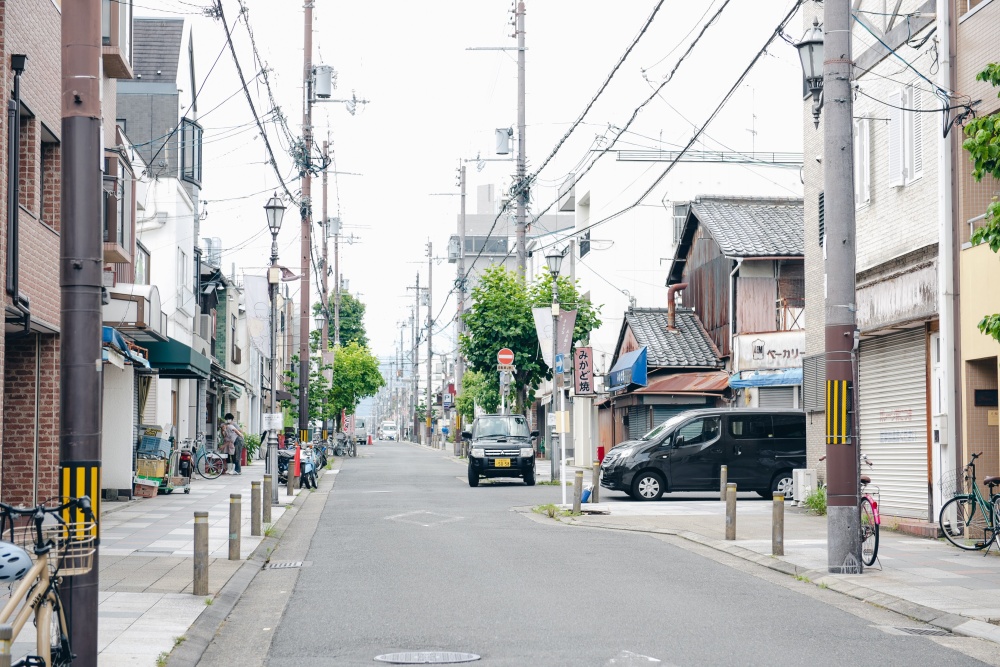
“There are lots of shops in this area, so there are lots of established cafés where workers drop in for a break and that’s why there is a strong coffee culture here,” Ryoko continues. Sure enough, there are several cafés and coffee bean roasters and retailers along the street. “And it’s not just old cafés. It’s surprising how many new coffee shops are being opened up by young people,” Ryoko says with a smile. The shopping street also has a facility called Shin-Omiya Hiroba, where young people can set up a pop-up stall before opening their own shop, and where flea markets and other events are hosted. Increasing numbers of shopping streets are dying out these days with the increase in big stores. But Shin-Omiya Shopping Street is very much alive with the perfect mix of the quiet calmness born from the sense of security that the old shops are supporting the lives of residents, and the fresh liveliness that the new shops bring.

A coffee bean roaster and retailer
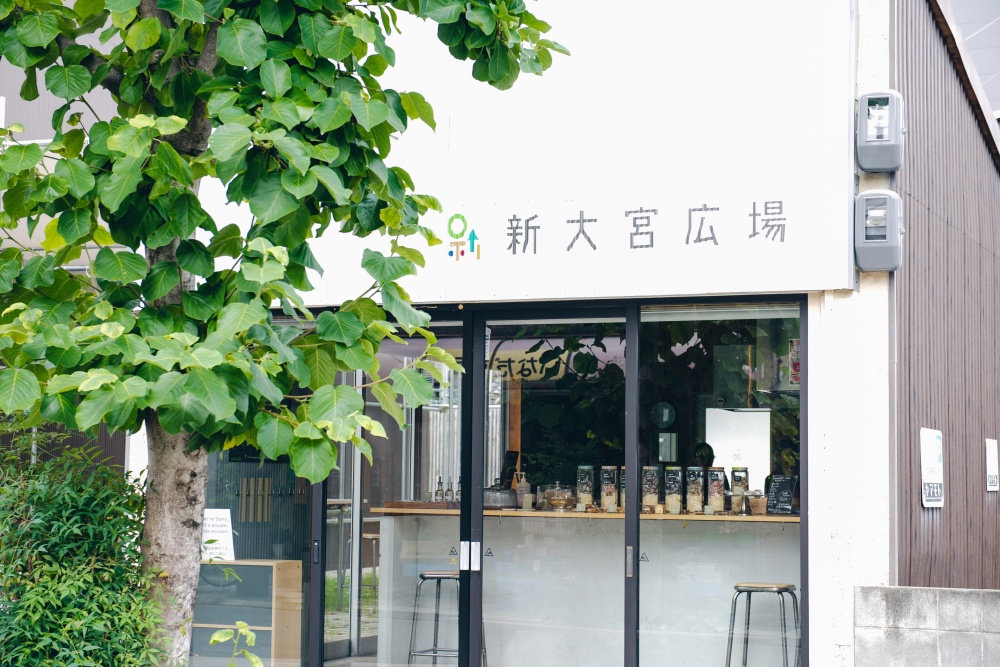
Shin-Omiya Hiroba in the shopping street is an activity hub for young people
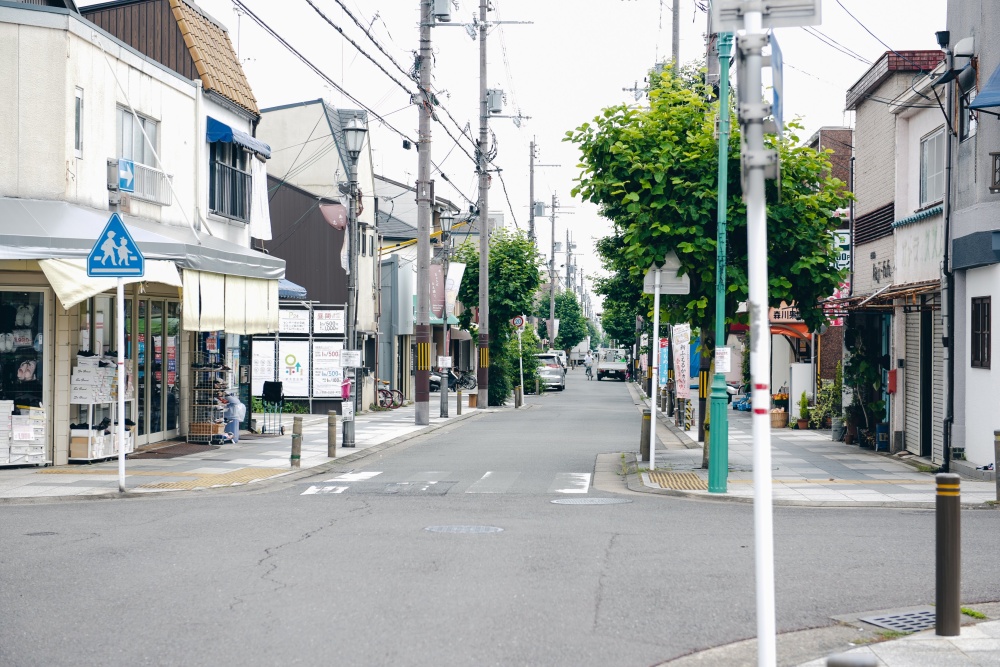
“It may not be a hive of activity, but it’s all we need. Living in this area where it’s the perfect level of relaxed, not too urban and not too country, I find I no longer want to go into town where it’s really noisy. I particularly don’t want to go to a big city now with COVID-19, so that’s just as well,” Ryoko says softly. Perhaps a hint as to how life may be from now on lies in the laid-back lifestyle of the Shichiku area.
The Shichiku area through Ryoko’s eyes
